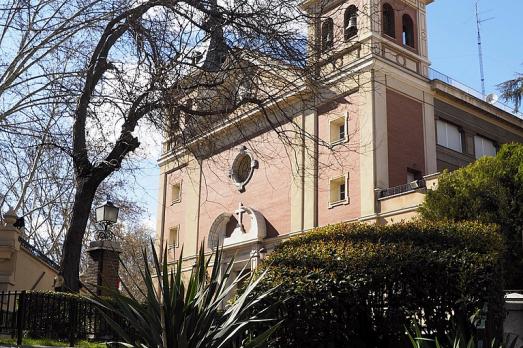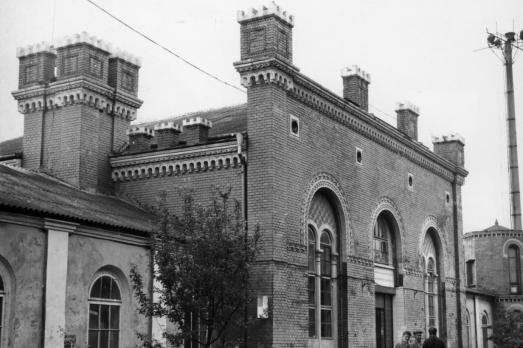
Read Between The Lines
Borgloon, BE
Read between the lines church was designed by Pieterjan Gijs and Arnout Van Vaerenbergh in 2011. This open-air church is entirely made of steel.
Here you can search for a building to visit. You can use the map find destinations, or you can use the filters to search for a building based upon what different criteria.

Borgloon, BE
Read between the lines church was designed by Pieterjan Gijs and Arnout Van Vaerenbergh in 2011. This open-air church is entirely made of steel.

Madrid, ES
The Royal Basilica of Nuestra Señora de Atocha was first mentioned in the 7th century. It was not until the 16th century, when the hermitage was in a state of ruin, that Friar Juan Hurtado de Mendoza, confessor to Charles V, decided to reform it and transform it into a large church. Philip IV (1621-1665), a great devotee of the Virgin, proclaimed Our Lady of Atocha patroness of the royal family and the Spanish monarchy in 1643. During his reign, on 14 August 1652, the original church burned down and he ordered it to be completely restored. His successor Charles II commissioned Lucas Jordán to decorate the interior with paintings. During the Civil War, the convent and the church were burnt down, losing all the works of art, except for the image of the Virgin of Atocha, which had been hidden before. At Christmas 1951, the new church was inaugurated.

Calatayud, ES
Located next to the old Puerta de Somajas, currently called Puerta de Zaragoza, the current Royal Basilica-Collegiate Church of the Holy Sepulcher was completed in 1613 by the architect Gaspar de Villaverde, who erected a proto-baroque temple of Herrerian tradition on the previous one of Mudejar style, of the that some remains are still preserved.

Buhuşi (Bohosh), RO
The kloyz was apparently built after the establishment of the court of Rabbi Itzhak Friedmann (1834-1896), a grandson of Rabbi Israel of Ruzhin, in Buhuşi (Bohosh) in 1866 (Streja A., and Schwarz L., "The Synagogue in Romania", The Hasefer Publishing House, 2009, p. 81б give a wrong date, 1840). The kloyz was built in the Neo-Baroque style as a small palace with the main entrance and the stairs from the courtyard. Four large semi-circular window decorated with architraves and keystones are located on each of the three facades of the building (except the western one). The building is decorated by rusticated decor, pilasters, and multilevel cornice. A semicircular niche flanked by pilasters marks the place of the Torah ark. The building was renovated in the 1980s, its prayer hall was completely repainted.

Sadhora (Sadigora), UA
The Rebbe's Kloyz in Sadhora is a Hasidic synagogue built between 1864 and 1881. This Romantic Historicist building is still used as a synagogue.

Liberec-Staré Město, CZ
The New Synagogue of Liberec is housed in the Reconciliation Building. The synagogue consists of a triangular stone building attached to the main structure, which houses the library and a meeting place.

Olomouc, CZ
The Red Church in Olomouc is a Neo-Gothic landmark designed by Franz Böhm and built in 1902, which served as a book store until 2019. After renovation, it will host cultural and educational events.

Berat, AL
The mosque is located just outside the citadel within the Berat Castle. The basic dimensions were 9.9 to 9.1 meters and had a wooden roof. It was built with red bricks and limestone, hence the name.

Joniškis, LT
The Red Synagogue (Great Beit Midrash) in Joniškis is an Ashkenazi synagogue built in brick in 1911. In the Soviet period the Red Synagogue was used for storage and later converted into a foundry with an apartment in the women's section. In the 1970s the former synagogue housed a youth club. The building's plan was altered; nevertheless, the façades remained almost unchanged, and the Torah ark and the details of interior painting were still extant. In 2007 the building lacked proper roofing; the western part was used as a temporary storage space. In 2008 plans were made for restoring the collapsed walls. The synagogue is now a museum.

Jorwert, NL
With a beautiful tower and sober interior, the Redbadcherke in Jorwert is a fine example of a Romanesque church. The front church has recently been renovated. The church is also used as a base for Stifting Nijkleaster.

new
The Chassidic Route is a cultural and historical trail tracing the rich legacy of Jewish communities in southeastern Poland and western Ukraine. This region was central to the rise of Chassidism in the 18th century. Here, we highlight 10 remarkable synagogues you’ll discover along this route.

he cradle of the Industrial Revolution in Germany, Chemnitz, is well-known for its industrial heritage landscape, but the city is also home to remarkable examples of religious architecture from different historical periods. Join us as we explore the key landmarks of this European Capital of Culture 2025.

The twin towns of Nova Gorica (Slovenia) and Gorizia (Italy), lying on the border between the two countries, have a rich religious heritage, steeped in centuries of tradition. If you are looking for ideas for your visit, take note of these 10 religious sites that you should not miss.